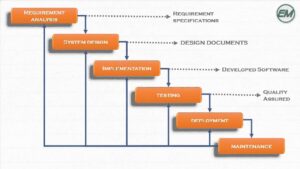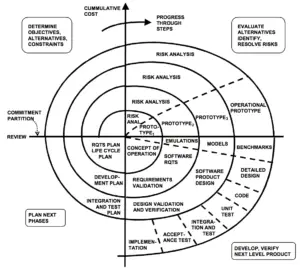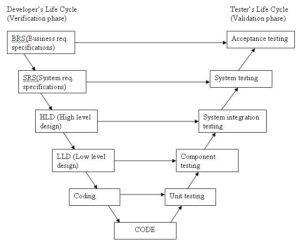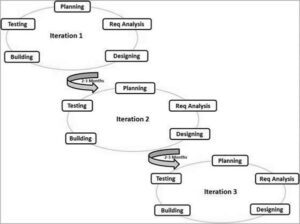SDLC, is a process used by a software industry to design, develop and test high quality software’s. The SDLC aims to produce a high quality software that meets customer expectations.
SDLC Models
- Waterfall Model
- Incremental Model
- Spiral Model
- V-Model
- Agile Model
Waterfall Model
The Waterfall Model was first Process Model to be introduced. It is also referred to as a linear-sequential life cycle model. It is very simple to understand and use. In a waterfall model, each phase must be completed fully before the next phase can begin. This type of software development model is basically used for the project which is small and there are no uncertain requirements.

At the end of each phase, a review takes place to determine if the project is on the right path and whether or not to continue or discard the project.
Incremental Model
In incremental model the whole requirement is divided into various builds. Multiple development cycles take place here, making the life cycle a “multi-waterfall” cycle. Cycles are divided up into smaller, more easily managed modules. Incremental model is a type of software development model like V-model, Agile model etc.

In this model, each module passes through the requirements, design, implementation and testing phases. A working version of software is produced during the first module, so you have working software early on during the software life cycle. Each subsequent release of the module adds function to the previous release. The process continues till the complete system is achieved.
Spiral Model
The spiral model is similar to the incremental model, with more emphasis placed on risk analysis. The spiral model has four phases: Planning, Risk Analysis, Engineering and Evaluation. A software project repeatedly passes through these phases in iterations (called Spirals in this model). The baseline spiral, starting in the planning phase, requirements are gathered and risk is assessed. Each subsequent spirals builds on the baseline spiral. Its one of the software development models like Waterfall, Agile, V-Model.

Planning Phase: Requirements are gathered during the planning phase. Requirements like ‘BRS’ that is ‘Bussiness Requirement Specifications’ and ‘SRS’ that is ‘System Requirement specifications’.
Risk Analysis: In the risk analysis phase, a process is undertaken to identify risk and alternate solutions. A prototype is produced at the end of the risk analysis phase. If any risk is found during the risk analysis then alternate solutions are suggested and implemented.
Development Phase: In this phase software is developed, along with testing at the end of the phase. Hence in this phase the development and testing is done.
Planning phase: This phase allows the customer to evaluate the output of the project to date before the project continues to the next spiral.
V-Model
V- model means Verification and Validation model. Just like the waterfall model, the V-Shaped life cycle is a sequential path of execution of processes. Each phase must be completed before the next phase begins. V-Model is one of the many software development models.

Testing of the product is planned in parallel with a corresponding phase of development in V-model.
Requirements like BRS and SRS begin the life cycle model just like the waterfall model. But, in this model before development is started, a system test plan is created. The test plan focuses on meeting the functionality specified in the requirements gathering.
Agile Model
Agile development model is also a type of Incremental model. Software is developed in incremental, rapid cycles. This results in small incremental releases with each release building on previous functionality. Each release is thoroughly tested to ensure software quality is maintained. It is used for time critical applications. Extreme Programming (XP) is currently one of the most well known agile development life cycle model.
